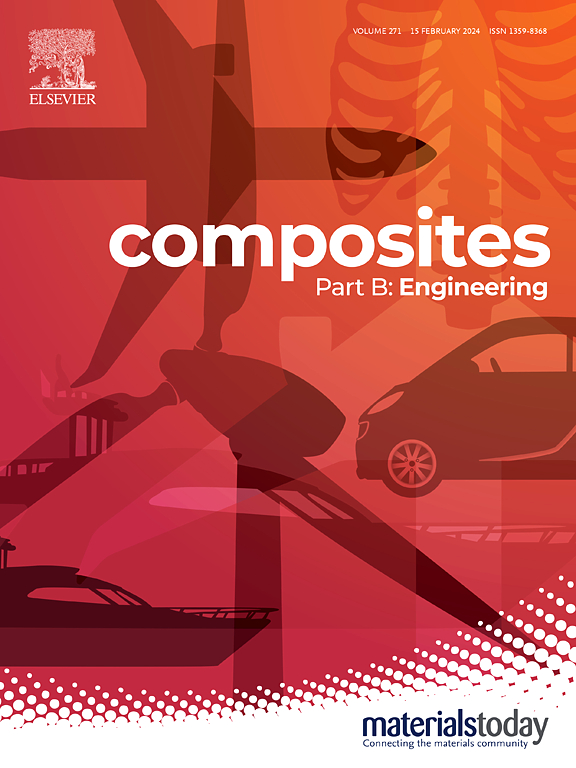Rapid estimation of residual stress in composite laminates using a deep operator network
IF 12.7
1区 材料科学
Q1 ENGINEERING, MULTIDISCIPLINARY
引用次数: 0
Abstract
A deep operator network (DeepONet) is designed and developed for rapid estimation of residual stress in composite laminates, which traditionally requires intensive finite element method (FEM) calculations to calibrate the incremental hole-drilling (IHD) method used in measuring residual stresses. The proposed DeepONet model incorporates graph convolution, trigonometric series expansion, and Monte Carlo dropout to effectively learn the relationship between residual stress distribution and the corresponding deformation observed in the IHD procedure. This learning is based on FEM data from various symmetric composite laminate configurations, which are composed of eight layers of fiber-reinforced plates with possible ply orientations at , , , and . Trained on 30 configurations, the proposed model exhibits strong generalization capabilities over an additional 40 unseen configurations, achieving a forward strain prediction error of 1.59% and an inverse stress calculation error of 3.92%. These errors are within the range of experimental noise and corresponding stress uncertainty levels commonly encountered in real experiments. The performance of the model suggests the potential for establishing a comprehensive database for the IHD method as applied to composite materials, filling a significant gap in resources when compared to those available for metallic materials.

求助全文
约1分钟内获得全文
求助全文
来源期刊

Composites Part B: Engineering
工程技术-材料科学:复合
CiteScore
24.40
自引率
11.50%
发文量
784
审稿时长
21 days
期刊介绍:
Composites Part B: Engineering is a journal that publishes impactful research of high quality on composite materials. This research is supported by fundamental mechanics and materials science and engineering approaches. The targeted research can cover a wide range of length scales, ranging from nano to micro and meso, and even to the full product and structure level. The journal specifically focuses on engineering applications that involve high performance composites. These applications can range from low volume and high cost to high volume and low cost composite development.
The main goal of the journal is to provide a platform for the prompt publication of original and high quality research. The emphasis is on design, development, modeling, validation, and manufacturing of engineering details and concepts. The journal welcomes both basic research papers and proposals for review articles. Authors are encouraged to address challenges across various application areas. These areas include, but are not limited to, aerospace, automotive, and other surface transportation. The journal also covers energy-related applications, with a focus on renewable energy. Other application areas include infrastructure, off-shore and maritime projects, health care technology, and recreational products.
 求助内容:
求助内容: 应助结果提醒方式:
应助结果提醒方式:


